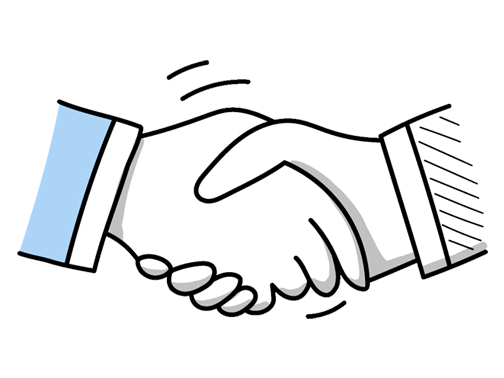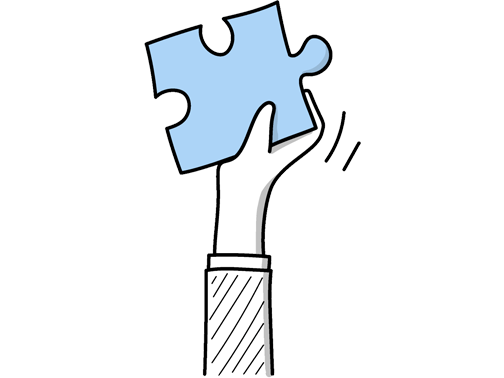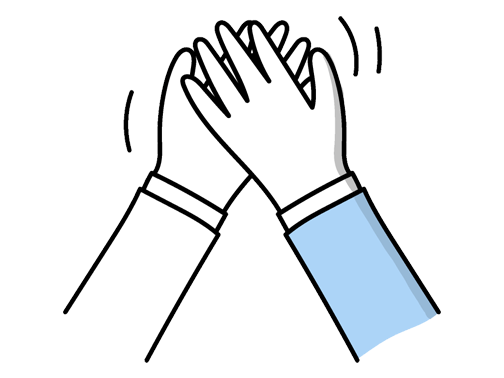Ventilation engineer Interview Questions (2025 Guide)
Find out common Ventilation engineer questions, how to answer, and tips for your next job interview
Practice Interviews Online - Identify your strengths and weakness in a realistic Ventilation engineer mock interview, under 10 minutes
Practice Now »Ventilation engineer Interview Questions
Employers ask this question to see how you think critically and solve problems under pressure while maintaining clear communication. You need to say that you quickly assess the problem by reviewing plans and site conditions, adapt your approach to fit the situation, and coordinate with your team or stakeholders to implement an effective solution.
Example: When unexpected issues arise during an installation, I first take a moment to understand what’s causing the problem. For example, if a duct doesn’t fit as planned, I’ll review the layout and consider adjustments without compromising performance. Throughout, I keep the team informed, so everyone’s aligned and we can quickly agree on the best way forward. Staying flexible and communicative helps keep the project on track.
Questions like this help interviewers gauge your depth of experience and versatility in ventilation engineering. You need to clearly state your total years in the field, mention different types of projects or environments you've worked in, and briefly highlight how your skills and responsibilities have grown over time.
Example: I have around seven years’ experience in ventilation engineering, working on a range of projects from commercial buildings to healthcare facilities. Over time, I’ve taken on more complex system designs and site management responsibilities, honing both my technical skills and my ability to lead teams. This hands-on exposure has given me a solid understanding of regulatory standards and practical challenges in different environments.
This interview question aims to assess your practical knowledge and problem-solving skills in designing ventilation systems tailored to commercial buildings. You need to explain how building layout and usage impact your design decisions, discuss challenges you encountered and how you resolved them, and highlight your proficiency with tools like CAD software to create effective ventilation plans.
Example: In my experience designing ventilation for commercial buildings, I start by assessing occupancy, air quality standards, and energy efficiency. One challenge was balancing airflow in a complex open-plan office, which I resolved by adjusting duct layouts and using variable speed fans. I regularly use software like AutoCAD and ventilation calculation tools to model and refine systems, ensuring they meet regulations and provide comfortable, healthy environments.
This interview question tests your ability to methodically identify and solve airflow problems, showing your practical knowledge and use of diagnostic tools. You should explain checking ductwork for leaks or blockages first, then mention using anemometers or pressure gauges to measure airflow and pressure differences.
Example: When diagnosing airflow problems, I start by assessing the system visually and measuring airflow with tools like anemometers or balometers. I check for blockages, leaks, or damaged components that might disrupt flow. I also review system settings and duct design. Throughout, I keep clear communication with facility managers and technicians to understand user concerns and ensure any changes align with their needs. This collaborative, methodical approach helps identify and resolve issues effectively.
Interviewers ask this question to assess your understanding of sustainable building practices and your ability to integrate environmental standards into your work. You need to explain your experience with LEED or similar standards, describe how you ensured compliance during your projects, and highlight the positive impact your ventilation solutions had on energy efficiency and sustainability.
Example: Yes, I worked on a commercial building project where meeting LEED criteria was essential. I focused on optimizing ventilation to improve air quality and reduce energy use, closely coordinating with the design team to meet environmental standards. This approach not only helped achieve certification but also contributed to a healthier indoor environment and lower operational costs, aligning with the project’s sustainability goals.
What they want to know is if you have practical skills with industry-standard tools that improve design accuracy and efficiency. You need to mention specific software like AutoCAD, Revit, or CFD tools, and explain how you use them to optimize ventilation system designs.
Example: I’m comfortable using industry-standard software like AutoCAD for drafting layouts and Revit for 3D modeling, which really helps visualize complex ventilation systems. I also often work with Duct Designer or similar tools to efficiently size and plan ductwork. These programs allow me to ensure designs are both practical and compliant with regulations, making the whole process smoother and more accurate.
Employers ask this question to see how you manage teamwork and keep everyone focused on the project's success. You need to say you communicate regularly through briefings, set clear roles and goals from the start, and encourage open feedback to address issues early.
Example: To keep everyone on the same page, I make it a point to have open and regular conversations about what we’re aiming to achieve. I also make sure each person understands their part clearly, so there’s no overlap or confusion. When I worked on a recent ventilation upgrade, encouraging questions early helped us spot issues before they became problems, which kept the project running smoothly.
Questions like this assess your ability to recognize and resolve safety risks in ventilation systems while ensuring regulatory compliance. In your answer, clearly explain the safety issue you identified, the practical steps you took to fix it, and how you ensured adherence to UK safety standards throughout the process.
Example: In a previous role, I noticed unusual airflow patterns that risked poor air quality in a workspace. I inspected the system, identified a blocked exhaust vent, and coordinated its cleaning and repair. Throughout, I ensured all work met the latest UK ventilation and health standards, keeping the environment safe for occupants. This proactive approach helped prevent potential hazards and maintained compliance with safety regulations.
Interviewers ask this to see how well you collaborate and adapt your designs based on input, ensuring safety and efficiency. You need to say that you actively listen to feedback, evaluate its impact on your design, and integrate valuable suggestions to improve the overall ventilation system.
Example: I believe the best designs come from collaboration. When I receive feedback, I listen carefully and consider how it can improve airflow or efficiency. For example, if a contractor suggests an easier duct route that saves space, I’ll review the impact and adjust accordingly. It’s about balancing practical input with technical standards to ensure the system works well for everyone involved.
Interviewers ask this to see if you understand how ventilation impacts air quality and comfort in various spaces. You need to mention considering building use, occupancy, local codes, and contaminant levels to select the right ventilation rate.
Example: When deciding ventilation rates, I first consider the building’s purpose—offices need different airflow compared to hospitals or schools. I refer to UK standards like Building Regulations Part F to ensure compliance and occupant comfort. For example, a gym requires higher air changes due to physical activity, whereas a library needs less but focused ventilation. It’s about balancing air quality, energy use, and the specific needs of each space.
What they want to understand is how well you communicate and collaborate across different engineering fields to achieve a common goal. You need to describe a specific project where you worked closely with other engineers, highlighting how you ensured effective coordination and resolved any interdisciplinary challenges.
Example: In a recent project, I worked closely with structural and electrical engineers to design a ventilation system for a new office building. We held regular meetings to ensure duct routes didn’t clash with structural elements or wiring. This collaboration helped us deliver a system that was efficient, compliant, and easy to maintain, showing the importance of communication across disciplines in successful engineering projects.
This question assesses your understanding of ventilation principles and your ability to distinguish between passive and active systems. You need to explain that natural ventilation relies on temperature-driven airflow through openings like windows, while mechanical ventilation uses fans or systems to control airflow, and mention practical uses such as energy-saving benefits of natural ventilation versus the control offered by mechanical systems.
Example: Natural ventilation relies on wind and temperature differences to move fresh air through spaces, making it energy-efficient and simple. Mechanical ventilation uses fans or systems to control airflow, offering consistent air quality regardless of outside conditions. While natural ventilation works well in mild climates or open designs, mechanical systems are better suited for airtight buildings or areas requiring precise control, like hospitals or offices. Both play important roles depending on the building’s needs.
What they want to know is that you understand communication is key to successful teamwork and project completion. You should say you actively listen and confirm understanding by summarizing key points, use tools like project management software to share timely updates, and adjust your communication style based on your audience.
Example: I make sure to really listen and check in with colleagues to ensure we're on the same page. I share updates clearly and promptly, whether through site chats or quick meetings. I also adjust how I explain things depending on who I’m speaking to—sometimes using visuals for clarity or simplifying technical details for non-technical team members. This keeps the whole team connected and moving forward smoothly.
This interview question assesses your problem-solving skills and technical knowledge in identifying and resolving ventilation problems. You need to clearly explain the issue, the diagnostic steps you took, and how you implemented a solution effectively.
Example: In a previous role, I was called to investigate poor airflow in a commercial building. I started by assessing the system layout and checking filters and fans for blockages. Noticing some dampers weren’t responding, I tested electrical connections and recalibrated the controls. After these adjustments, airflow improved significantly, and I documented the findings to prevent recurrence. It was a satisfying example of methodical problem-solving in action.
Hiring managers ask this question to ensure you prioritize worker safety and comply with legal standards during ventilation installation. You need to explain that you follow health and safety regulations like COSHH and CDM, conduct thorough risk assessments before starting work, and ensure all workers use the correct PPE such as gloves, goggles, and respiratory masks throughout the installation.
Example: When installing ventilation systems, I start by thoroughly assessing the site to spot any potential hazards early on. I make sure everyone is equipped with the right protective gear, like gloves and masks, depending on the work involved. Following UK safety standards is a priority, and I encourage open communication so the team can address any concerns immediately. This approach helps keep everyone safe and the project running smoothly.
Interviewers ask this to see if you actively maintain your knowledge and ensure compliance with evolving safety standards. You need to say that you regularly review industry updates, attend relevant training or workshops, and follow authoritative sources like ASHRAE and OSHA.
Example: I regularly review updates from bodies like CIBSE and the HSE, and subscribe to industry newsletters to catch any changes early. Attending workshops and trade shows also helps me see how new regulations apply in practice. For example, I recently joined a seminar on F-Gas regulations which clarified some complex compliance issues. Staying connected with peers means I can discuss challenges and solutions as standards evolve.
Questions like this assess your foundational knowledge and practical approach to HVAC design, showing how well you understand system components and real-world constraints. You need to clearly explain how heating, ventilation, and air conditioning parts work together, mention key design factors like energy efficiency and building codes, and share an example of overcoming design challenges.
Example: Sure. HVAC design starts with understanding how heating, ventilation, and air conditioning work together to create comfortable, healthy indoor environments. It involves selecting the right equipment and layout while considering factors like airflow, energy efficiency, and building use. In a recent project, balancing ventilation rates and energy consumption was key to meeting client needs and regulations, demonstrating practical problem solving within those design constraints.
This interview question aims to assess your practical knowledge and attention to detail in ensuring HVAC systems operate efficiently and effectively. You need to clearly explain the step-by-step process of measuring airflow with tools like anemometers, adjusting system components such as diffusers and fans to balance air distribution, and verifying your adjustments through re-measurements to achieve optimal performance.
Example: Balancing an HVAC system starts with measuring airflow at each diffuser or vent using tools like an anemometer. I then adjust dampers or valves to ensure each area receives the right volume of air, considering the system’s layout and components. After initial adjustments, I double-check readings and fine-tune as needed to maintain comfort and efficiency. For example, in a recent office project, this approach helped eliminate hot and cold spots effectively.
Interviewers ask this to see how you approach difficult engineering challenges and apply your technical knowledge in real situations. You need to clearly describe the problem, your analysis process, and the specific steps you took to resolve it, highlighting your problem-solving skills and technical expertise.
Example: At a recent project, we faced poor airflow in a tightly sealed office, causing stuffiness and complaints. I analysed the duct layout and discovered a blockage in a key return vent. By redesigning the duct routes and adding an extraction fan, we improved air circulation significantly. It felt rewarding to restore comfort without major structural changes, showing how thoughtful adjustments can solve complex ventilation challenges efficiently.
This question checks if you understand and apply local regulations to ensure safety and legal compliance in your designs. You need to say that you reference specific codes like Approved Document F, perform thorough risk assessments and calculations, and collaborate with authorities to verify compliance.
Example: When designing ventilation systems, I start by reviewing the latest UK building regulations, like Approved Document F. I then cross-check my designs against these standards, using thorough documentation to track compliance. I also work closely with architects and contractors to ensure everyone’s on the same page regarding safety and efficiency. For example, in a recent project, this collaboration helped us address a challenging airflow issue while meeting all regulatory requirements.
This question aims to see how well you work with others, communicate technical information, and solve problems as a team. You need to describe a specific situation where you effectively shared information, tackled a ventilation challenge together, and adapted your role to support the team’s success.
Example: In a recent project, I worked closely with a colleague to troubleshoot a ventilation issue in a complex system. We shared ideas openly, adapted our approach based on each other’s input, and divided tasks efficiently. This not only resolved the problem quickly but also strengthened our working relationship, showing how collaboration and flexibility can lead to better outcomes in challenging situations.
This interview question aims to assess your practical experience and familiarity with different ventilation systems and challenges. In your answer, clearly describe specific projects you’ve handled, highlighting the scope, your role, and the technical aspects of ventilation you applied.
Example: In my previous roles, I’ve worked on a mix of commercial and residential ventilation projects. This includes designing HVAC systems for office buildings to improve air quality and energy efficiency, as well as upgrading ventilation in residential complexes to meet current regulations. I’ve also been involved in ensuring compliance with UK building standards while collaborating closely with architects and contractors to deliver effective, practical solutions.
Hiring managers ask this to see if you can maintain collaboration and keep projects on track despite differing opinions. You need to say you listen actively, communicate openly, and seek compromises to resolve conflicts while focusing on project goals.
Example: When disagreements arise, I listen carefully to everyone’s perspective to understand the root cause. Then, I focus on finding common ground and practical solutions that benefit the project. For example, on a recent site, differing views on ventilation methods were resolved by encouraging open dialogue and consulting technical standards, which helped us align quickly and keep the project on track. This approach keeps teamwork strong and objectives clear.
Interviewers ask this to see how you prioritize energy efficiency in your designs and your approach to optimizing system performance. You should explain that you analyze airflow and system demand to balance energy use and select energy-efficient fans and sustainable materials to reduce overall consumption.
Example: When designing ventilation systems, I start by carefully assessing airflow needs to avoid wasteful over-ventilation. I often incorporate energy-efficient fans and use materials that improve insulation. Throughout the project, I monitor system performance and adjust the design as needed, like tweaking controls or updating components. For example, on a recent office build, this approach helped reduce energy consumption by 15% while maintaining excellent air quality.
This interview question aims to assess your awareness of environmental impact and how you integrate sustainability into your designs. You need to explain that you follow relevant regulations, use energy-efficient materials and technologies, and prioritize designs that reduce emissions and waste.
Example: I focus on using energy-efficient systems and sustainable materials to minimise environmental impact. I keep up to date with UK regulations and standards like Part L and BREEAM, ensuring compliance from the start. For example, in a recent project, I integrated heat recovery ventilation to reduce energy consumption while maintaining indoor air quality, striking a balance between performance and sustainability.
Ace your next Ventilation engineer interview with even more questions and answers
Common Interview Questions To Expect
The interviewer is looking for your motivation, passion, and understanding of the role. You can answer by discussing your relevant skills, experience, and how the role aligns with your career goals.
Example: I've always been fascinated by the mechanics of ventilation systems and how they contribute to creating a comfortable and healthy indoor environment. With my background in mechanical engineering and experience in HVAC systems, I believe this role is a perfect fit for me to further develop my skills and make a positive impact in the field. I am excited about the opportunity to work on innovative projects and contribute to improving air quality in buildings across the UK.
The interviewer is looking for you to highlight your key skills, abilities, and qualities that make you a strong candidate for the position. Be sure to focus on strengths relevant to the role of a ventilation engineer.
Example: I would say my biggest strengths are my attention to detail, problem-solving skills, and ability to work well under pressure. These qualities have helped me successfully design and install ventilation systems that meet safety standards and improve indoor air quality. I believe they would be valuable assets in this role as a ventilation engineer.
Interviewers are looking for honesty, professionalism, and a positive attitude in your response. You can mention career growth, seeking new challenges, or a desire for a better work-life balance.
Example: I left my last job because I felt like I had reached a plateau in my career and was looking for new challenges to continue growing as a ventilation engineer. I wanted to explore opportunities that would allow me to further develop my skills and expertise in the field. Ultimately, I am excited about the potential for growth and learning in a new environment.
The interviewer is looking for your commitment to ongoing learning and improvement in your field. You can answer by discussing courses, certifications, conferences, or other ways you plan to stay current in your industry.
Example: I plan to stay up-to-date in my field by attending relevant conferences and workshops, as well as pursuing certifications in new ventilation technologies. I believe continuous learning is crucial in a rapidly evolving industry like ventilation engineering. I am also considering enrolling in advanced courses to further enhance my skills and knowledge.
The interviewer is looking for examples of how you prioritize tasks, manage your time effectively, and handle stress in a fast-paced environment. Be prepared to provide specific examples from your experience.
Example: Yes, I am able to handle multiple responsibilities at once. In my previous role as a ventilation engineer, I was responsible for managing multiple projects simultaneously, prioritizing tasks based on deadlines and importance. I have developed strong time management skills and can handle stress well in a fast-paced environment.
Company Research Tips
The company's official website is a goldmine of information. Look for details about the company's history, mission, vision, and values. Pay special attention to the 'About Us', 'Our Team', and 'News' or 'Blog' sections. These can provide insights into the company culture, recent achievements, and future plans. For a Ventilation Engineer role, also check if they have any specific projects or services related to ventilation systems.
Tip: Look for any technical jargon or industry-specific terms used on the website. This can help you speak their language during the interview.
LinkedIn can provide valuable insights about the company and its employees. Look at the company's LinkedIn page for updates and news. Also, check the profiles of employees working in the same or similar roles. This can give you an idea of the skills and experience the company values. For a Ventilation Engineer role, look for any specific software or tools they use, or any certifications they have.
Tip: Use LinkedIn's 'Alumni' tool to find people who have worked at the company and reach out to them for insights.
Stay updated with the latest news and trends in the ventilation engineering field. This can help you understand the current market scenario, challenges, and opportunities. Look for any new technologies, regulations, or standards in the UK ventilation industry. Also, check if the company has been mentioned in any industry reports or articles.
Tip: Use Google Alerts to get notified about the latest news related to the company or the ventilation engineering field.
Understanding the company's competitors can give you a broader view of the industry landscape. Look for the strengths and weaknesses of these competitors, and how the company differentiates itself. For a Ventilation Engineer role, also check if there are any unique ventilation solutions offered by these competitors.
Tip: Use tools like SWOT analysis to compare the company with its competitors.
Curveball Questions
How to respond to the silly questions where there's no right answer.
This question is looking for creativity and the ability to think outside the box. Common answers include flying, super strength, or invisibility. An answer that ties the superpower to a specific skill or trait relevant to the job can stand out.
Example: If I were a superhero, my superpower would be the ability to control air flow. This would allow me to manipulate ventilation systems with ease and ensure optimal air quality in any environment.
This question is looking for insight into your interests and values. Common answers include figures like Albert Einstein, Leonardo da Vinci, or Marie Curie. An answer that connects the historical figure's achievements to your own goals or aspirations can stand out.
Example: If I could have dinner with any historical figure, I would choose Thomas Edison. His innovative spirit and determination to solve complex problems resonate with me, and I would love to learn from his experiences in overcoming challenges.
This question is looking for your problem-solving skills and adaptability. Common answers may involve projects with unique constraints or unconventional solutions. An answer that showcases your ability to think creatively and find effective solutions in challenging situations can stand out.
Example: The most unusual project I worked on was designing ventilation systems for an underground bunker. I approached it by researching specialized ventilation techniques and collaborating with experts in the field to ensure the safety and comfort of the occupants.
This question is looking for your imagination and ability to envision different scenarios. Common answers include the Renaissance, the Industrial Revolution, or a future era with advanced technology. An answer that connects the time period to your interests or career goals can stand out.
Example: If I could live in any time period, I would choose the Industrial Revolution. The rapid advancements in engineering and technology during that time fascinate me, and I would love to witness the birth of modern ventilation systems and their impact on society.
This question is looking for your problem-solving skills and ability to prioritize. Common answers include a knife, a water purifier, or a satellite phone. An answer that demonstrates resourcefulness and adaptability in a challenging situation can stand out.
Example: If I were stranded on a desert island, I would bring a multi-tool for survival tasks, a solar-powered fan for ventilation, and a notebook to document my experiences and ideas for improving ventilation systems in extreme environments.
What to wear to an Ventilation engineer interview
- Dark-colored business suit
- White or light-colored dress shirt
- Conservative tie
- Polished dress shoes
- Minimal accessories
- Neat and professional hairstyle
- Clean, trimmed nails
- Light use of cologne or perfume
- No visible tattoos or piercings
- Carry a briefcase or portfolio





